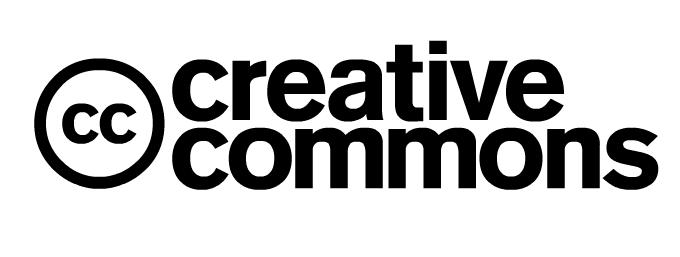Didache Volume 21 Number 2
INTRODUCTION
Dean G. Blevins, Editor
Welcome Didache: Faithful Teaching volume 21:2, our second edition in this volume containing an intriguing blend of writing dedicated to the arts of ministry, trauma and forgiveness, and the ongoing mission of God. The edition also represents a diverse range of scholarship from established and emerging researchers, as well as students contributing to our global conversation.
The edition opens with four articles that might best reflect the range of theology and the arts in service to education and ministry. Fordham professor Richard Viladesau notes that artistic beauty, both in performance and as text, can enrich both an encounter with God, and theological reflection, through action, sound, sight, and rhetorical proclamation. The edition’s first four articles bear witness to this approach in service to Wesleyan theological education. Francisca Ireland opens the edition with a new vision for theological aesthetics, arguing that John Wesley’s practical theology provides an “engaged aesthetics” of body and imagination allowing practitioners to reflect theologically on one’s own and others’ experiences. Ireland’s treatise sets the stage for C. P. Troutman’s introduction of a Wesleyan vision of ethnodoxology. Troutman argues that Wesley provides a theology that motivates an embrace of various cultural forms of music and celebration, commensurate with Wesley’s own vision. Both works should inspire a fresh engagement with an aesthetic vision of theology and culture for a new Wesleyan generation. The work moves from sound to sight as Vincinus Couto utilizes an aesthetic methodology, and historic artwork, to explicate the theological issues underlying the Synod of Dort and the division around Arminian and Calvinist discourse. The journal returns from sight to sound, specifically rhetoric in the preaching moment, as Jorge Alberto Baños Peña offers a rationale for biblical preaching in both English and Spanish language offerings. Reverend Baños, our new Regional Education Coordinator for Mesoamérica, provides a grounded presentation demonstrating the interplay between artistic expression, scripture, and theological reflection. Collectively these four submissions provide a model for a fresh engagement with theology and the arts. An engagement that hopefully offers new explorations for education in a Wesleyan context.
The journal continues several themes from previous editions. Joseph Bankard extends the conversation on virtue from our last edition. Dr. Bankard revisits the multifaceted practice, and virtue, of forgiveness. Bankard notes that this interpersonal, and intrapersonal, the process entails three elements: omissions, actions, and emotions. Bankard’s article, while explicating the process, hearkens to the last edition and Michael Leffell’s treatise, Embodied Virtue: A Model of Virtuous Caring for Practical Theology and Christian Formation (Didache 21:1) which calls for a renewed investigation into the core virtues that undergird the Christian life.
The final two articles represent two authors who, as students, remind us of the emerging scholarship that continues to enrich our tradition. Sarah Legreid, a student at NTC Manchester, introduces a trauma hermeneutic into a detailed study of Paul’s theology through his Corinthian correspondence. The journal previously addressed the impact of trauma upon the people of Ukraine through Ukraine & Trauma: Resilience and Eucharistic Hope, by Sylvia Cortez Masyuk (Didache 19:1). Legreid, through her exegetical work, argues 2 Corinthians reveals a nuanced and balanced trauma dynamic within Paul’s life of suffering and resilience. My deep appreciation to Dr. Svetlana Khobnya for recommending and serving as faculty reviewer for this journal article. The edition closes with Nazarene Theological Seminary student Hannah Jones-Nelson’s treatise addressing the theological concept of perichoresis as the intimate relationship, or dance, of the trinity; a relationship that allows humanity to both extend and fulfill the missio dei. Ms. Jones-Nelson’s writing reflects an ongoing engagement around a theology of the mission of God seen in other writings (see Didache 20:2 for additional writings). My thanks go to Dr. Josh Sweeden, Dean of the Faculty, who endorsed this submission.
Just a reminder that faculty members may also recommend student papers to Didache: Faithful Teaching as this edition demonstrates. The faculty member recommending writing will be considered the primary reviewer of that submission, though we will provide some editorial support. We again thank the staff of the Asia Pacific Region, who diligently contribute to the formatting and maintenance of our website, and Dr. Tammy Carter who works tirelessly promoting Didache: Faithful Teaching, as she does in the development of the Wesleyan Holiness Digital Library (WHDL) https://www.whdl.org/.
Table of Contents
pdf Introduction (100 KB) , Dean G. Blevins
pdf Wesley’s Aesthetic Practical Theology (337 KB) , Francisca Ireland
pdf John Wesley, Ethnodoxologist: Engaging Missionally with the Ethnodoxology Conversation (294 KB)
pdf Synod of Dordrecht: An Iconographic Analysis (6.07 MB) , Vinicius Couto
pdf What is Biblical Preaching? It’s Importance and Purpose for the Church’s Work (627 KB) , Jorge Alberto Baños Peña
pdf ¿Qué es La Predicación Bíblica? Importancia y Propósito para el Quehacer de la Iglesia (187 KB) , Jorge Alberto Baños Peña
pdf Forgiveness as Process and Virtue: How to Overcome Feelings of Anger and Resentment (252 KB) , Joseph Bankard
pdf Death and Life: Reading 2 Corinthians 4:7-12 (264 KB) , Sarah Legreid
pdf Perichoresis and Missional Theology: Humanity’s Invitation into the Mission of God (217 KB) , Hannah Jones-Nelson

